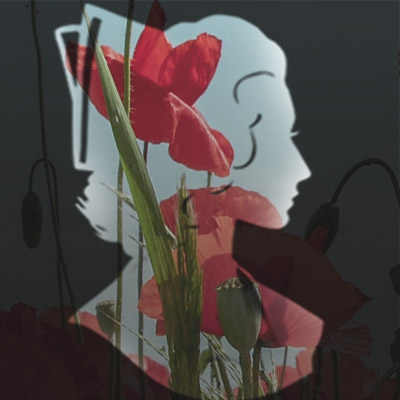
Dorothy Pollard was born in Ossett on February 18th 1892, the daughter of Ossett born mungo manufacturer George Arthur Pollard (1865-1908) and his wife, Huddersfield born, Ellen Sykes (1867-1939). The couples’ marriage banns were read at Ossett Holy Trinity Church in May 1888 and they married at St. Peter’s Church Huddersfield on June 13th 1888.
George, educated at Bramham College, was the son of Abraham Pollard, once of Longlands House, Flushdyke, Ossett, and was a mungo manufacturer at Northfield Mill on Church Street. The Mill suffered a dreadful fire in 1888, the year in which George married. The fire destroyed the four storey mill causing significant damage. Abraham died in 1900 when his grand-daughter, Dorothy was just eight years of age.
Dorothy Pollard was the younger of two daughters born to George and Ellen. Both girls were baptised at Ossett Holy Trinity Church; Margaret Sophia on July 17th 1889 and Dorothy on September 8th 1892. In 1891 the couple lived with their daughter, Margaret, at Church Street. Following his father’s death in 1900, and with his family complete, George moved to live as tenant at the grand twelve roomed Longlands House. Paradoxically, Longlands, once home to the wealthy Haigh family, stood adjacent to dwellings, which in earlier times, formed Ossett’s Old Workhouse.
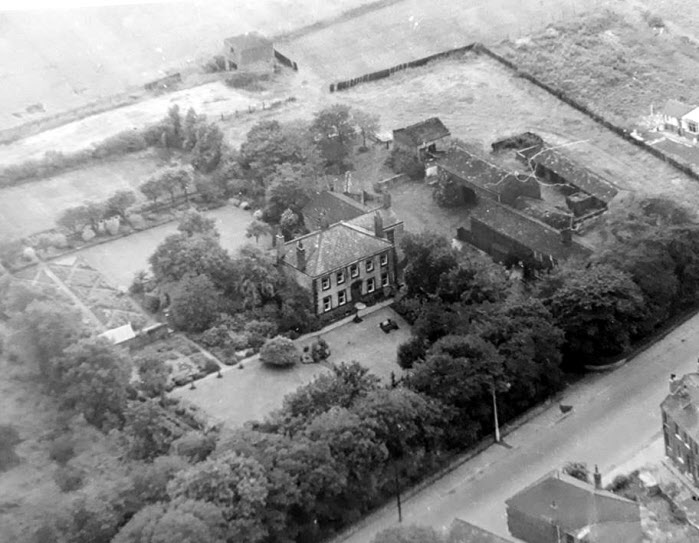
Above: Longlands, Flushdyke, Ossett
In September 1908 George Pollard died in Copenhagen. His brother, William Edward became the head of Longlands House. In 1911, William Pollard was living there with his widowed sister-in-law, Ellen, and her two daughters, Margaret Sophia and Dorothy.
Following the outbreak of the First World War on the 4th of August 1914, the British Red Cross and the Order of St John worked together. One of the many important services that the Red Cross provided was auxiliary hospitals and convalescent homes for wounded servicemen. The Red Cross prepared for this before the conflict even began, finding some suitable properties that could be used as hospitals should war break out. However, they did not anticipate how important this service would be in the recuperation of so many servicemen. As soon as wounded men began to arrive from abroad the Red Cross’ temporary hospitals were largely available for use, with equipment and staff in place.
In many cases local women from the neighbourhood volunteered in the hospitals part-time and they drew on members who were too old or too young for work in a military hospital. Many were unable to leave home for six months due to family commitments, but were willing to sign a three-month hospital contract. Auxiliary hospitals also attracted members who found work in a military hospital too strenuous.
The patients at these hospitals generally did not have life-threatening injuries and needed to convalesce. The servicemen preferred the auxiliary hospitals to the military hospitals as the discipline was not as strict, conditions were less crowded and the surroundings were more homely. It was partly their popularity and their reputation for an excellent standard of care which lead to many being reopened during the Second World War. They broadened their services to include a range of rehabilitation therapies.
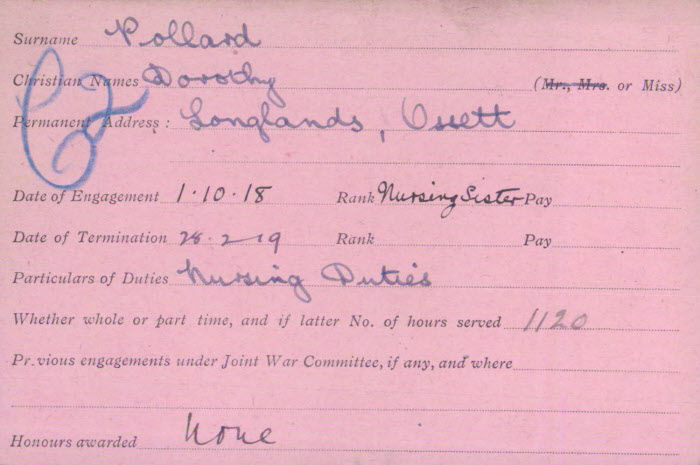
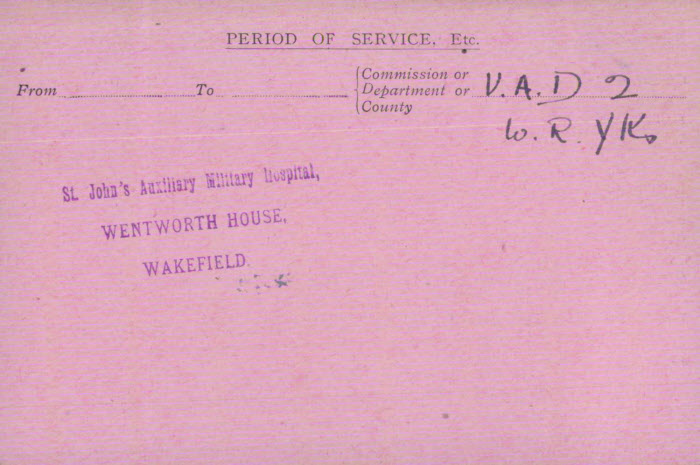
On October 1st 1918, Dorothy Pollard of Longlands, Ossett was engaged as a Nursing Sister in the Voluntary Aid Department (VAD) at St John’s Auxiliary Hospital at Wentworth House in Wakefield. On February 28th 1919, when the war over and her nursing services no longer required Dorothy ceased her service at the Auxiliary Hospital.
Another Ossett woman, Gladys Mary Jessop (nee Mitchell), also served at Wentworth House during exactly the same period as Dorothy. They must surely have known each other and perhaps they travelled together to support the Wentworth House Auxiliary Hospital.

Above: Wentworth House, Wakefield, once St. John’s Auxiliary Hospital during the Great War.
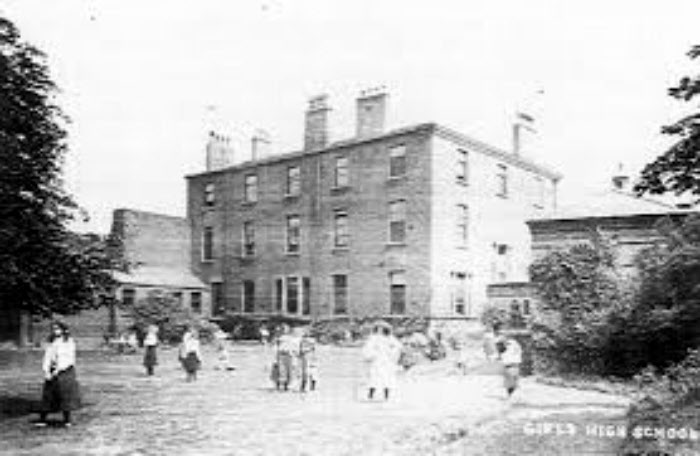
Above: Wentworth House when it was Wakefield Girls High School.
Wentworth House was built in 1802-1805 for John Pemberton Heywood, a barrister. In 1878 the house and its grounds were bought for £8000. It became Wakefield Girls’ High School.
Dorothy Pollard was 31 and living at “Glendene” , Station Road, Ossett, when she married 30 year old John Francis Carter Braine at Ossett Holy Trinity Church on April 5th 1923. John Francis lived at Wimpole Street, London, and was a Fellow of the Royal College of Surgeons. Perhaps they met whilst Dorothy was serving during WW1 as a Nursing Sister. Dorothy and John made their first home at 77 Chirron House, New Cavendish Street, Westminster where they had their only child, Ann C. Braine in spring 1927.
In September 1937 the couple sailed from Southampton aboard the Cunard White Star Queen Mary for New York. By 1939 they had moved from London to live at Magpie Shaw, Tonbridge where John Francis was working as a Radiologist. Dorothy died near Cuckfield, West Sussex in spring 1975, aged 83.
References
1. Ossett Through The Ages (OTTA) Facebook posts.